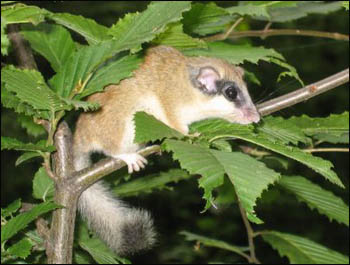Facts About Forest dormouse
The forest dormouse, a charming little rodent belonging to the Gliridae family, is found across Eastern Europe, the Balkans, and parts of western Central Asia. Classified as "least concern" on the IUCN Red List, these creatures have a diploid count of 48 chromosomes.
Forest dormice thrive in central Moldova, Transcaucasia, and Central Asia, benefiting from abundant food supplies and ideal nesting spots in the foliage. They share some similarities with garden dormice but differ in size, skull shape, the size of their auditory bullae, and tail color. Picture a tiny squirrel with greyish-brown fur and a fluffy grey tail, and you've envisioned the forest dormouse!
Their habitat ranges from Switzerland to Russia, with isolated populations in Israel, Iran, Afghanistan, and China. They favor various woodland areas, including altitudes as high as 3,500 meters.
Forest dormice build their nests in dense forests, either on lower tree branches or in thick bushes. They are quite territorial and communicate through alarm calls and ultrasounds. Nocturnal by nature, they feed on fruits, nuts, seeds, and small invertebrates. When winter arrives, they hibernate, with their hibernation patterns varying depending on their location.
Breeding seasons differ based on geography, but generally, the gestation period lasts about four weeks, and litters usually contain four to seven young. The mother’s care is crucial, and the young dormice typically reach sexual maturity in about a year. Predators such as owls, wildcats, and martens pose a threat, along with habitat destruction and diseases.
Interestingly, forest dormice can be quite feisty, especially when they feel threatened. They play a crucial role in their ecosystems by controlling arthropod populations and aiding in seed dispersal. To protect these animals, various conservation efforts, including laws and programs, have been established at both national and international levels.
The forest dormouse has a fascinating ancestry, tracing back to a fossil named Eomaia, which is considered an early eutherian ancestor. This discovery provides insight into the evolutionary history of placental mammals, indicating that they diverged from marsupials over 125 million years ago.

 Germany
Germany